As the name suggests, Gurdwara Pathar Sahib in Leh is built around a sacred pathar (rock/boulder) immortalized by the touch of Guru Nanak Dev ji – the founder of the Sikh Religion. It is located 25 km northwest of Leh town in Ladakh, on the Leh-Srinagar Highway. Being located at an altitude of 12000 feet, Gurdwara Pathar Sahib is among the highest Gurdwaras in the world. The region has a cold desert climate with temperatures ranging from 20° C in summers to -25° C in winters. The undulating land surrounded by high and dry mountains with snow-clad peaks are the salient features of the natural landscape around the Gurdwara.

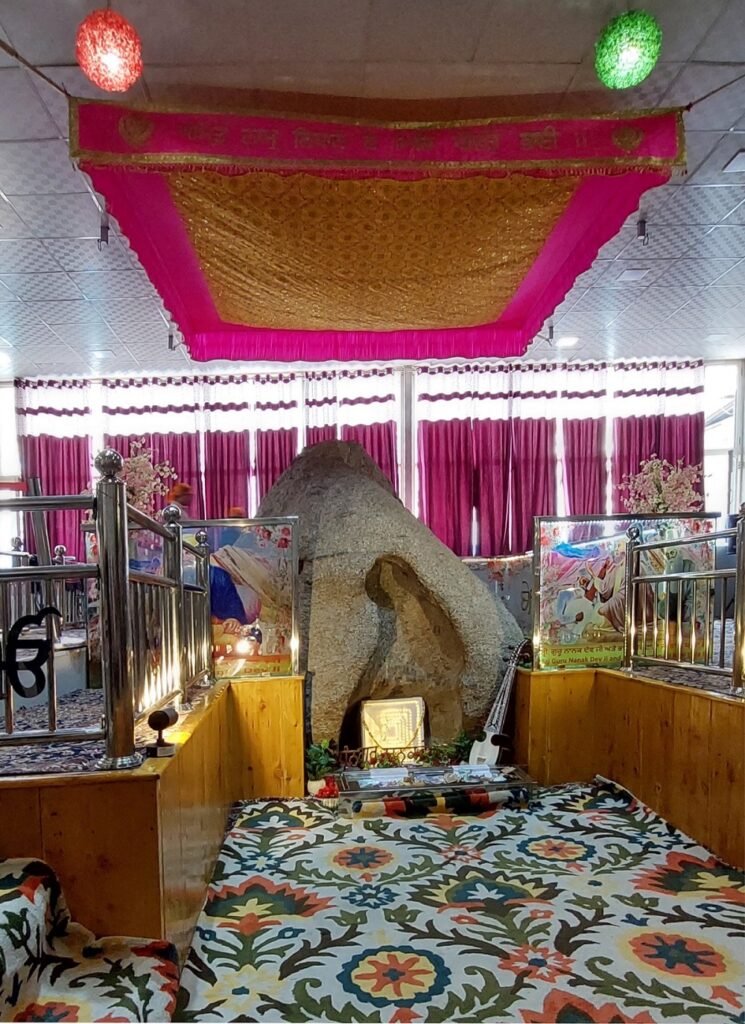
The Indian Army has constructed this revered Sikh shrine with the assistance of local Ladakhi people and Buddhist Lamas. The army is also performing its maintenance and management with complete devotion and as per the Sikh Rehat Maryada or the code of conduct and conventions for Sikhism. Thousands of pilgrims from all faiths and walks of life visit this holy shrine daily and partake in sacred Langar (free meal), apart from performing community service (sewa), like serving food and cleaning utensils.
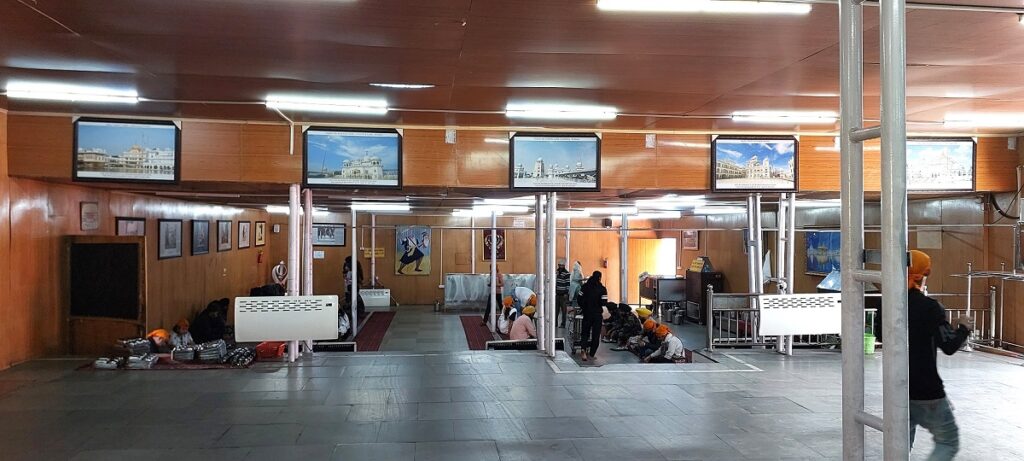
As mentioned above, the pilgrims visiting the Gurdwara and the army personnel who manage it belong to different regions, faiths, and religions. This devotion and reverence to Guru Nanak Dev ji unite them with a true spirit of ‘Unity in Diversity.’ It is a faithful portrayal of the core concept of Sikhism – Manas Ki Jaat Sabhe Eke Pehchanbo (Recognize all of humankind as a single cast of humanity), as said by Guru Gobind Singh – the tenth Guru of Sikhs.
The author had a chance to visit this holy place on 28 June 2023 with his family and pay obeisance at Gurdwara Pathar Sahib. Being an architect by profession, the author observed the built environment and the infrastructure of the campus of Gurdwara vis-à-vis the challenging terrain and peculiar weather conditions and clicked photos to showcase the latest developments.
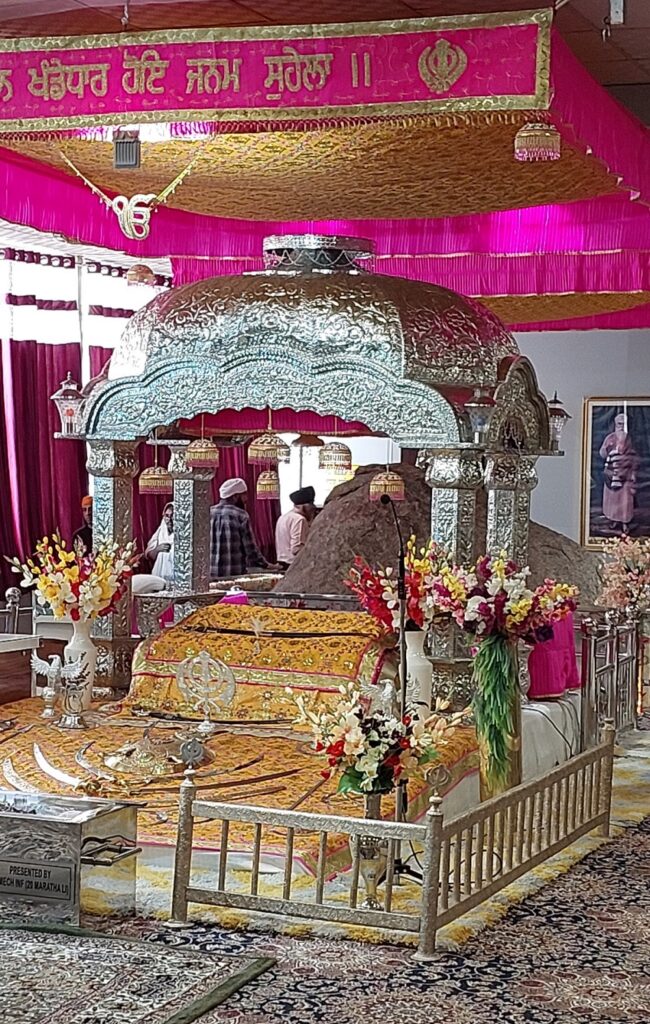
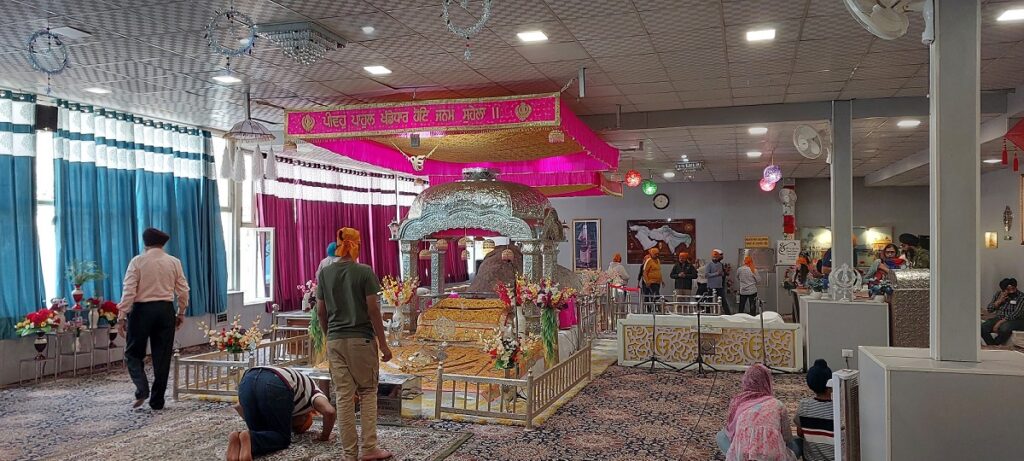
Currently, Gurdwara Pathar Sahib has a sprawling campus at the level of the approach road. It comprises a large hall of the main Gurdwara, a langar hall with a kitchen, room for shoes (jorra ghar), and other facilities. Entrance to the premises is through a well-adorned, low-height gateway which leads to a wide corridor with descending steps leading to the main hall at the sunken level. Most of the campus has a linear development along the Leh-Srinagar Highway. A huge parking lot has been provided on the eastern fringe of the campus. A large plaza towards the north of the main campus has access to the parking lot. An additional langar hall of large size abuts this plaza on its north. It has been provided to cater to the massive rush of pilgrims. Also visible from this plaza is another Gurdwara building on a hilltop towards the northwest. It is accessible through a broad flight of steps leading from the plaza.
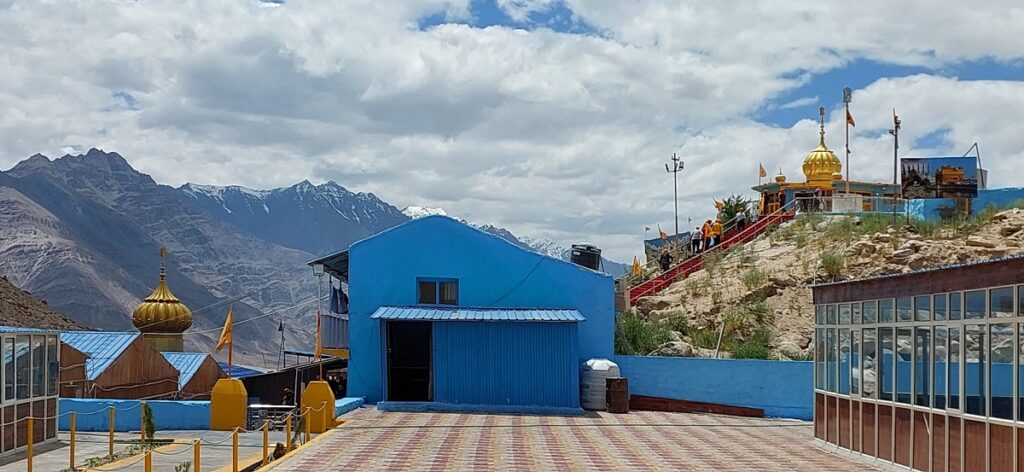
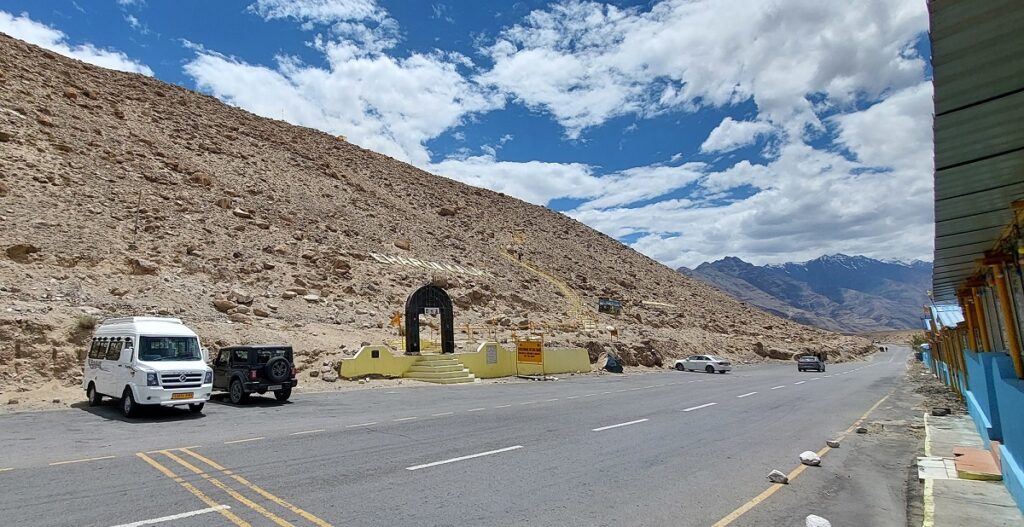
Considering the challenging topographical and climatic conditions, the entire campus has been kept to a low height. A towering Nishan Sahib (exalted ensign) with a tall flagpole – a typical feature of Sikh Gurdwaras, breaks the monotony of the low-height and horizontal campus.

The history of the Gurdwara Pathar Sahib goes back to 1517 A.D. when Guru Nanak Dev ji visited Ladakh. During his journey from Sikkim, Nepal, and Tibet to Punjab via Srinagar, Guruji stayed at this place for a brief period. However, this halt of Guru Nanak Dev ji was not comfortable. According to folklore, a cruel rakshasa (demon) lived on the top of the hill towards the south of this place where Guruji stayed. The demon was infamous for eating people after killing them. To get rid of his cruelty, the natives pleaded to Guruji for help. On hearing their plights, Guruji settled down in the foothill where the demon dwelled and started delivering sermons to the people.
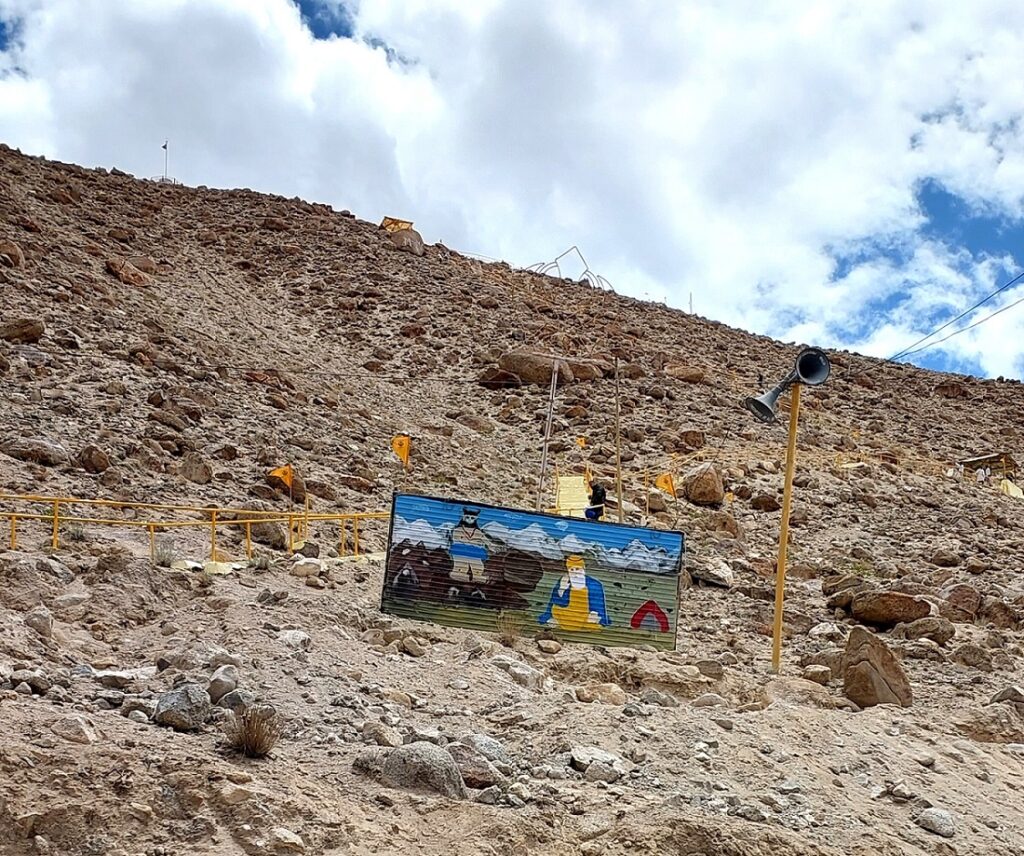
The demon was annoyed by the popularity of Guru Nanak Dev ji, and, thus, decided to kill him. One day when Guruji was meditating, the demon pushed a large boulder (pathar) down the hilltop to kill Guruji. The boulder rolled down the hill, but when it touched Guruji, it softened like molten wax and stopped against Guruji’s body. Guruji continued his meditation unhurt and undisturbed, and the impact of Guruji’s body formed a deep impression on the rock. The demon thought Guruji might have been killed and came down to ensure it. The demon was angry when seeing Guruji unhurt and still in deep meditation. He hit the boulder with his foot, but the pathar still had softness like warm wax, and his foot got embedded in it. Acknowledging the divine powers of Guruji, he fell to his feet to apologize for his mistake. Guruji pardoned the demon with advice to serve humanity for the rest of his life.
It is believed that this holy rock (pathar), with an imprint of Guru Nanak Dev ji’s body, remained in the safe care of Buddhist Lamas till the mid-1960s. Buddhists revere Guru Nanak Devji as their saint and call him Lama Nanak or Guru Gompka Maharaj. These people worshipped this holy rock with the imprint of Guru Ji’s body for centuries and are still worshipping it.
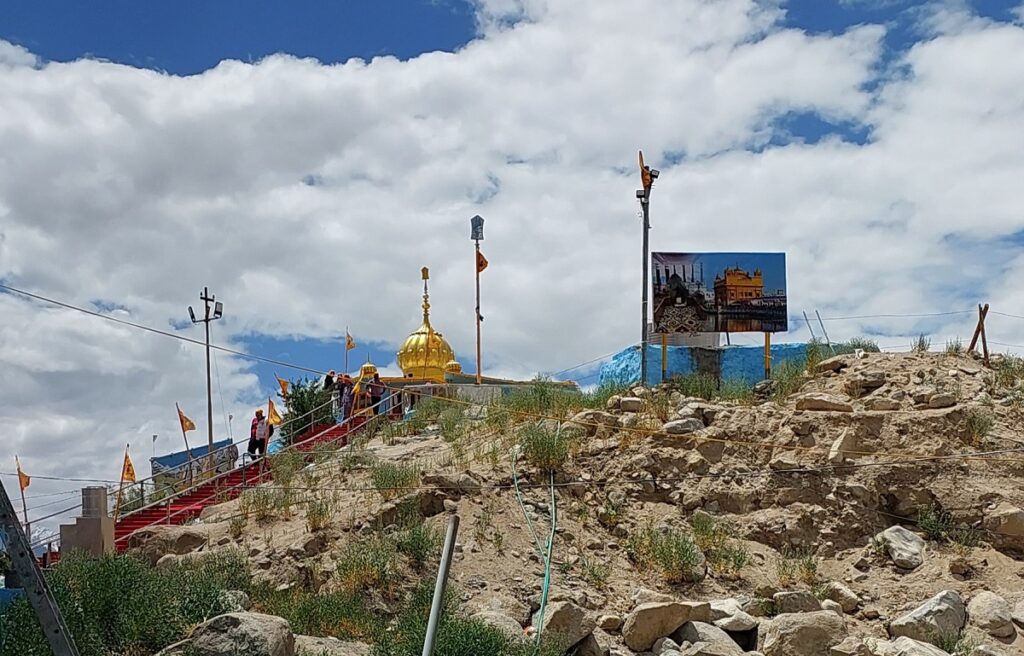
After centuries, this holy rock resurfaced in the 1970s during the construction of Leh-Nimmu Road. A large boulder was found in the middle of a roadbed covered with Buddhist prayer flags. The bulldozer driver tried to push the rock to the side to clear the way for the construction of the road. Despite his repeated efforts, the rock refused to give way. During the proceeding night, the driver heard a voice not to move the rock in his dream. He narrated the incident to his senior army officer, who advised him not to give importance to his dream and continue with his efforts to remove it. When all efforts failed, the officer blew it off with dynamite the next day. That night, the army officer, too, had a dream not to remove the rock. The following day, several Lamas and Ladakhi people came to tell the story of the Holy Saint called Nanak Lama and the unyielding boulder.
After that, the army decided to preserve this holy rock (pathar) and constructed a befitting Gurdwara building around it. Since then, the army has maintained and managed the Gurdwara Pathar Sahib.
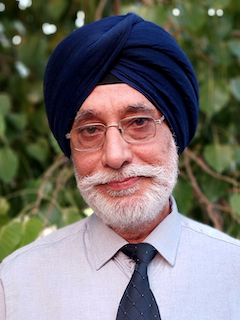
Sarbjit Bahga (b1957) is a Chandigarh-based architect, author, photo artist, and archivist. He is the Principal Architect of Bahga Design Studio LLP. Earlier, Bahga worked in the Department of Architecture, Punjab, Punjab Health Systems Corporation, and Punjab Mandi Board in various positions.
He has more than 42 years of practical experience designing various types of buildings, complexes, and large campuses. His completed works include an eclectic range of administrative, recreational, educational, medical, residential, commercial, and agricultural buildings. A monograph on his selected works titled “MODERN REGIONALISM: The Architecture of Sarbjit Bahga” has been published.
Bahga is also a keen researcher and a prolific architectural writer. He has 12 books to his credit, which include Modern Architecture in India, New Indian Homes, Le Corbusier, and Pierre Jeanneret: The Indian Architecture, Trees in Urban Habitat, Landscaping Human Habitat, New Indian Architecture -1947-2020, and Hand-Drawn Perspectives and Sketches. Bahga’s contribution to architecture has been largely recognized. He is a three-time recipient of the World Architecture Community Awards. His name has been featured in the Guinness Book of World Records for designing the “longest covered concrete corridor” in Vidya Sagar Institute of Mental Health, Amritsar.



Thanks a lot ji for publishing my article so lavishly. Regards.